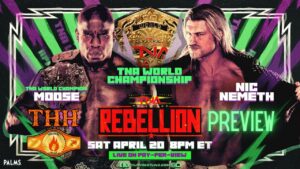Pro wrestling isn’t known for its lengthy careers. While many of managed to parlay into lengthy careers spanning decades, there are thousands and thousands of aspiring wrestlers who have had their careers cut short by injury and the lack of limelight. As many old school promoters are wan to say, “it ain’t ballet” – pro wrestling is an industry that takes its toll without mercy on the body and mind. But in 1990, two men made history becoming the first men to wrestle in seven different decades – the great American wrestler Lou Thesz and Mexican Luchador Cavernio Galindo. Since then, several other names have achieved the seven-decade status, making them the most durable and resilient performers of all time. Here’s a look at some of pro wrestling longest-serving grapplers.
Disclaimer: Pro wrestling mad man and hardcore wrestling pioneer Abdullah the Butcher has stated he began in Montreal in 1958 as a 17-year old, although no official records place Abdullah in a ring until the early to mid-1960s. If Abdullah indeed started in the 1950s, he would be a seven-decade wrestler, working from the 1950s through 2010s, but going off official records, he is only a six-decade performer.
Lou Thesz to Dory Funk Jr.: A Look at Wrestling’s Iron Men (and Women)
Lou Thesz (1930s to 1990s)

Lou Thesz is easily one of the top World Champions in the history of professional wrestling. He made his debut in 1932 at the age of 16 and won his first World title, the American Wrestling Alliance (AWA) World Championship (not to be confused with Verne Gagne’s later AWA) at the age of 21 in 1937. Lou Thesz would go on to three World titles reigns with the National Wrestling Alliance (NWA), with his first reign lasting from 1949 to 1956, and won win his final World title in Mexico in 1977 with Universal Wrestling Association (UWA). Lou Thesz retired from wrestling full-time in 1979, but made returns to the ring with the likes of Memphis Wrestling, Stampede Wrestling, All-Japan Wrestling, and even in the WWF in 1987, in a Legends Battle Royale. His final match would be with New Japan Pro Wrestling in 1990, where he lost to his protege, Masahiro Chono.
Cavernario Galindo (1930s to 1990s)

Ain 1938, as Ruddy Valentino, Rodolfo Galindo Ramirez made his debut in Mexico at the age of 18, and soon caught the eye of Empresa Mexicana de la Lucha Libre (EMLL), Mexico’s premier promotion. Salvador Lutteroth, the founder and promoter of EMLL, changed him into Cavernio Galindo, who became a mainstay with EMLL even through the companies rebranding to Consejo Mundial de Lucha Libre (CMLL) in 1991. While he only won one title, the EMLL Mexican National Lightweight Championship in 1949, he remained a popular figure in Mexico’s wrestling scene. He continued to wrestle until 1997, nearly making it to becoming the first eight-decade grappler, until a spinal injury finally retired him. He passed away in 1999.
Fabulous Moolah (1940s to 2000s)

The Fabulous Moolah became the first seven-decade female performer when she competed in a WWE ring in 2000 alongside her cohort Mae Young. Debuting in 1949, the Fabulous Moolah dominated women’s professional wrestling from the 1950s through the 1980s before retiring from the ring in the late 1980s. She would return – with Young – WWF television during the Attitude Era, in 1999, where she would win another WWF Women’s Championship. She would continue to appear – and compete – in a WWE ring until 2004. She passed away in 2007.
Mae Young (1940s to 1970s, 1990s to 2010s)

Mae Young was Moolah’s best friend since the earliest days of both their careers, but Young was always the more physical wrestler. While Moolah would also hit seven decades, she accomplished that feat in a non-linear fashion. She retired from the ring in the 1970s, missed the 1980s, and only returned to the ring in 1999 with WWF and Moolah. She achieved her seventh decade when she competed in a 2-on-1 Handicap Match and defeated LayCool (Michelle McCool & Layla) on Monday Night Raw in 2010.
Domenic DeNucci (1950s to 2010s)

Domenic DeNucci got his start in the Canadian wrestling territories in 1958, working Montreal and Calgary until the 1960s. After leaving Canada in 1963, he headed to Australia and the original World Championship Wrestling. He returned to North America in 1967, where he began a near 20-year career with WWE (then WWWF) as a low to mid card wrestler. After leaving WWF in 1987, he continued to work indies in North America, having his final match in April 2012 in Toronto, Ontario.
Gypsy Joe (1950s to 2010s)

Puerto Rico’s Gypsy Joe began his pro wrestling career on his native island in 1951 at the age of 18. He headed to the United States in 1963, and became a notoriously tough journeyman throughout multiple promotions and territories, becoming an early pioneer of the hardcore style of wrestling. He was also a frequent competitor in Japan with International Wrestling Enterprise (IWE) and AJPW but never fought a regular gig with any of the majors following the boom of the 1980s. Joe recently came back up in wrestling media, as his brutal 2003 match against New Jack was recently highlighted in a recent episode of VICE‘s Dark Side of the Ring. He held his retirement match on January 7, 2011, at the age of 76, and passed away five years later in 2016.
Johnny Saint (1950s to 2010s)

Manchester, England’s Johnny Saint made his debut in 1958 as a 17-year old, trained as a pro wrestler by the father of another British legend, Billy Robinson. For decades, he was a top star with World of Sport and his technical prowess was an inspiration for generations. He originally retired in 1996 but returned to the ring in 2007 before retiring for good in 2015. In 2018, he was announced as the General Manager for NXT UK.
Adrian Street (1950s to 2010s)

Welsh wrestler Adrian Street debuted in 1957 as a 16-year old under the name Kid Tarzan Jonathan. By the 1970s, he had revolutionized wrestling with his outlandish persona as “Exotic” Adrian Street, by adorning himself in garb seen by 70s glam rockers like David Bowie, T-Rex and Gary Glitter. As well as a star in his native United Kingdom, he also worked multiple NWA territories during the 1980s like Mid Atlantic, Memphis Wrestling, and Continental Championship Wrestling (CCW, formerly Southeastern Championship Wrestling). Street wrestled his final match on June 14, 2014, at the age of 73.
Great Kojika (1960s to 2020s)

Japan’s iron man is The Great Kojika, who made his debut with Rikidozan‘s Japan Pro Wrestling Alliance (JWA) in 1963. In 1967, he began making tours in the United States in NWA territories, primarily with NWA Hollywood. Following JWA’s closure in 1973, he joined AJPW where he would compete until his first retirement in 1986. He returned to the ring in 1995 after co-founding Big Japan Wrestling (BJW) and began to work other Japanese promotions such as FREEDOMS, DDT Pro, Wrestle-1, and more, most of whom he still competes for to this day. He made his NJPW debut in 1997 at the Tokyo Dome show against Masa Saito. So far in 2020, he’s competed for both AJPW and BJW (which he still co-owns), competing in barbed wire matches at the age of 77.
Dory Funk Jr. (1960s to 2020s)

While many would assume that his wildman brother Terry Funk would outlast them all, Dory Funk Jr. is actually enjoying a longer career than his younger brother. Dory Funk Jr. made his debut in 1963 – two years before Terry would get the bug – and become of the top stars in the NWA in the 1970s. He won the NWA World’s Heavyweight Championship in 1969, holding it for 1,563 days before losing it in 1973. By the mid-70s and throughout the 1980s, he was wrestling primarily with AJPW, but still made his presence known in North America with stints with WWF, Mid Atlantic, Mid South, and WCW. He still competes on the US indies periodically, last teaming with The Steiner Brothers, Scott and Rick, earlier this year at the age of 79. His brother Terry hasn’t competed since 2017.
Jimmy Valiant (1960s to 2020s)

Originally debuting in 1964 as Big Jim Valen, a move to the WWWF in the 1970s changed his name to “Handsome” Jimmy Valiant, where he teamed with Johnny Valiant where the “brothers” became WWWF Tag Team Champions. He also work with the AWA in the 1970s, as well as Memphis Wrestling, and in the 1980’s became “Boogie Woogie Man” Jimmy Valiant in Mid Atlantic. From 1989 through 1995 he worked for the United States Wrestling Association (UWSA), before heading off to various US indies, where he’s continued to work to this day. He recently competed for WrestlePro in February of 2020, where he faced Colt Cabana in a tag match.
tay tuned to the Last Word on Pro Wrestling for more on this and other stories from around the world of wrestling, as they develop. You can always count on LWOPW to be on top of the major news in the wrestling world, as well as to provide you with analysis, previews, videos, interviews, and editorials on the wrestling world.






